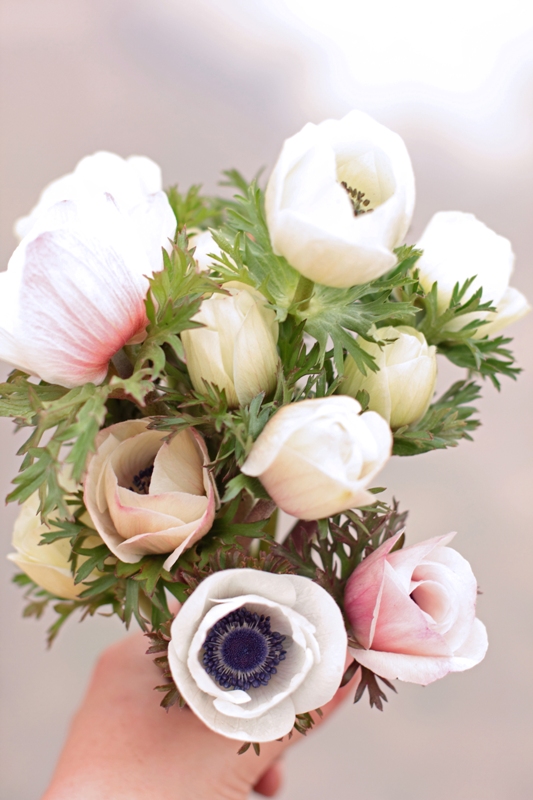Anemone coronaria (pronounced Ah-nem-O-nee) have saved my sanity in the depths of winter. No matter how gray or cold the day, their cheerful faces and lady-like collar of green around their necks are sure to turn a frown upside down.

Anemone corms (similar to bulbs) are planted in the fall for blooms in late winter and early spring. In my fields here in Philadelphia they tend to bloom from January through early May, being most abundant in March and April. The white with black “eyes” is the most popular for weddings, but anemones also come in pinks, red, burgundy, purple, and lavender-blue.

Anemones actually love the cold, blooming happily even when it’s in the mid-30s. They are most robust when the temperatures hang out in the 40s. But even though they’re tough, they won’t survive the winters here without some help. For that reason, we grow anemones in an unheated hoop house and in low tunnels covered with plastic in the open field.

If picked at the right stage (when their heads are upright but the petals aren’t open yet), these beauties can last a good 10 days, if not longer, in the vase. I love to gaze into their “eyes” and look at the artful stamens (“lashes”) that surround them. But my favorite attribute of anemones is that they actually get more beautiful with age. The petals flatten out fully, get a little wrinkled (in a lovely way), and the colors shift just a bit. It’s no wonder these are such a popular bloom.


Recent Comments